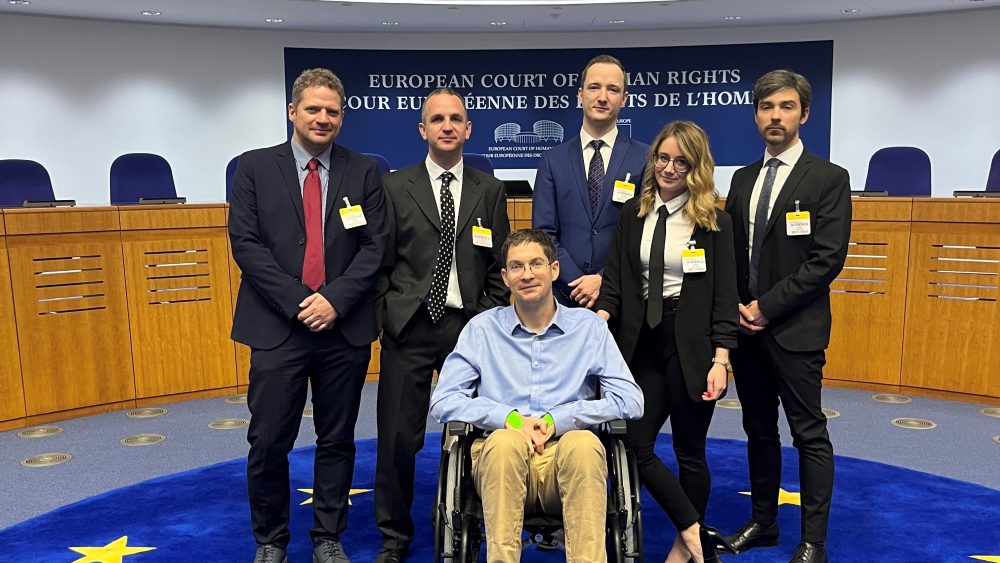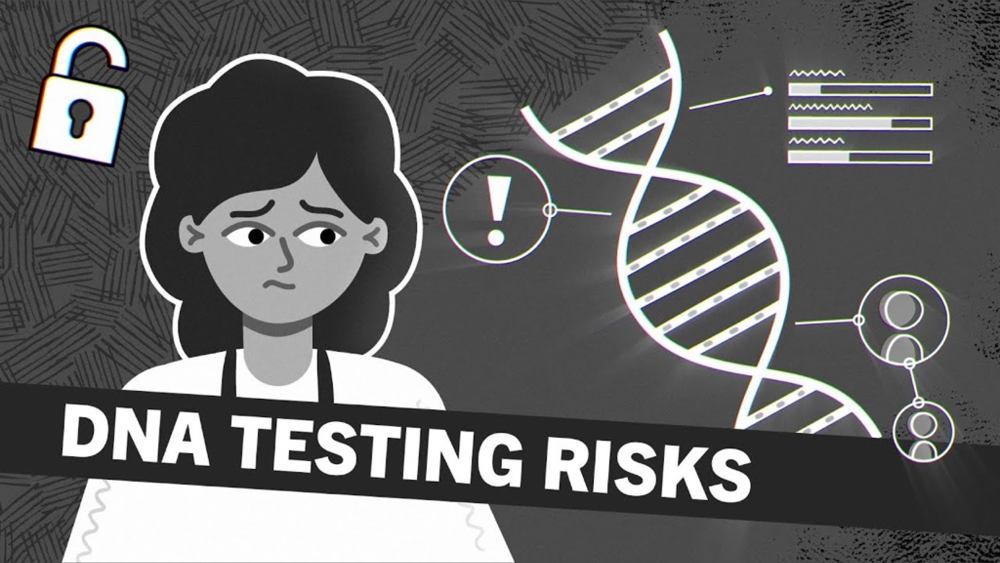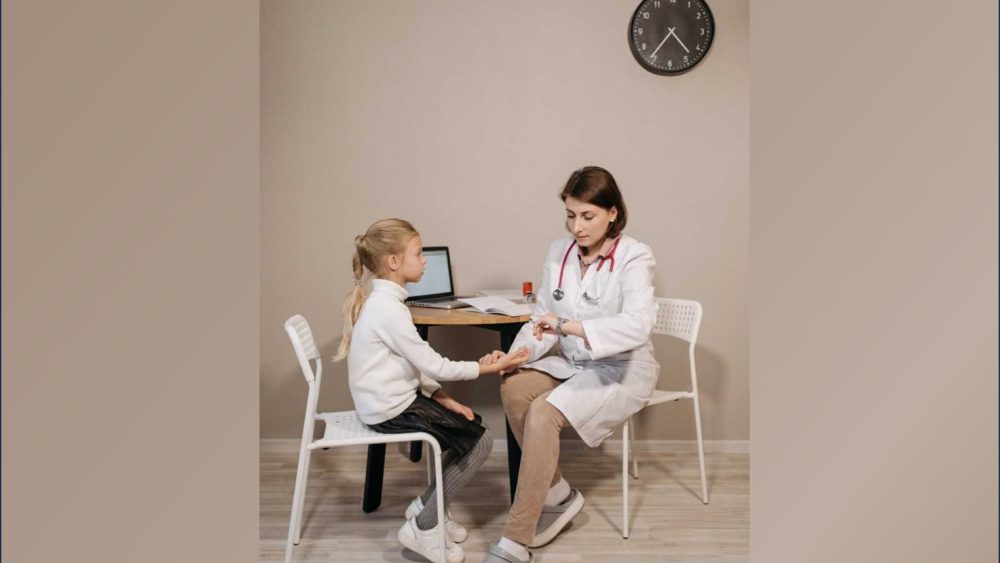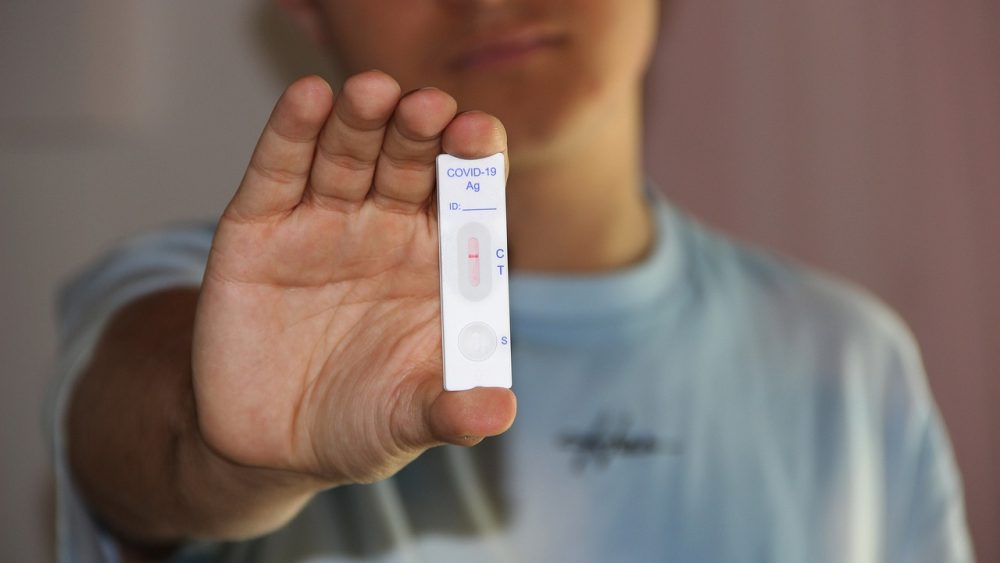av Moa Engstam*
Tolkavgifter: En uppmärksammad fråga
De senaste åren har tolkavgifter i svensk vård varit föremål för debatt. Diskussionerna tog fart efter offentliggörandet av Tidöavtalet. I avtalet återfinns nämligen en plan för att begränsa rätten till offentligt finansierad tolk för personer med uppehållstillstånd eller svenskt medborgarskap.[1] Utgångspunkten är att den enskilde ska bekosta sin egen tolk.[2] Syftet med förslaget uppges vara att sänka kostnaderna för tolkanvändning och ge incitament till personer att lära sig svenska.[3] Vårdpersonal har öppet riktat skarp kritik mot förslaget, vilket de menar riskerar att försämra liv och hälsa för patienter och leda till att patientsäkerheten försämras.[4]
I februari 2024 röstade Region Blekinge genom ett beslut som innebar att en tolkavgift skulle införas vid läkarbesök, och att avgiften skulle tas ut som ett tillägg på patientavgiften.[5] Beslutet har överklagats och inhiberats av förvaltningsrätten i Växjö i avvaktan på en slutlig dom.[6] Detta innebär att beslutet inte har kunnat verkställas.
Den grundläggande frågan är hur väl beslutet respektive förslaget överensstämmer med nuvarande svensk lagstiftning. I detta blogginlägg analyseras denna frågat med hänsyn till den svenska normgivningsmakten.
Tolkavgiften: En betungande offentligrättslig avgift?
I 8 kap. regeringsformen (1974:52, RF) står att läsa om normgivningsmakten i svensk rätt, det vill säga hur föreskrifter får utfärdas, samt vem som får utfärda dem. Anledningen till att det finns en fördelning av normgivningsmakten har enligt lagstiftaren varit en strävan efter att normgivning inom de för medborgarna viktigaste områdena endast ska utövas av riksdagen. Därutöver har den offentliga debatten kring lagförslag framhävts. Argumentet är att särskilt viktiga frågor måste kunna vara föremål för debatt.[7]
Områden där föreskrifter behöver meddelas enligt lag, men andra ord av riksdagen, räknas upp i 8 kap. 2 § RF: detta utgör det primära lagområdet. Ett sådant område är betungande offentligrättsliga föreskrifter, se 8 kap. 2 § punkt 2 RF. Det gäller med andra ord föreskrifter som avser förhållandet mellan enskilda och det allmänna och som innebär skyldigheter för enskilda eller i övrigt avser ingrepp i enskildas personliga eller ekonomiska förhållanden. I förarbetena beskrivs att om
den enskilde ”rättsligt eller faktiskt kan anses vara tvingad att erlägga avgiften”[8] tyder detta på att det rör sig om en betungande offentligrättslig avgift.
Hur kan det då avgöras huruvida något är en betungande offentligrättslig föreskrift? Strömberg menar att avgifter för myndigheters prestationer vid myndighetsutövning, särskilt åtgärder mot enskilda, är betungande.[9] Myndighetsutövning innebär offentlig verksamhet där myndigheter självständigt fattar beslut som representerar samhällets inflytande över medborgarna och som medför positiva eller negativa rättsverkningar, främst gällande enskildas skyldigheter eller ingrepp i deras frihet eller egendom. Därigenom går det att uttyda att den enskilde befinner sig i ett slags beroendeförhållande gentemot myndigheten.[10]
Det finns följaktligen goda skäl att se avgift för tolk som en betungande offentligrättslig avgift. Tolken används av vårdpersonal på grund av skyldigheter enligt hälso- och sjukvårdslagstiftningarna; det är således inte tal om någon rätt för patienten att erbjudas tolk.[11] Detta innebär att frivillighetsaspekten kan ifrågasättas. Anta att en person som söker vård på en vårdcentral har svårt att kommunicera och att sjuksköterskan därför bestämmer sig för att ha med en telefontolk under samtalet med patienten. Har patienten i detta fall någon reell möjlighet att vägra tolk utan att det kraftigt försämrar chanserna att kunna göra sig förstådd och få lämplig behandling? Personen befinner sig snarare i ett slags beroendeförhållande till vårdpersonalen, som i sin tur är berättigad att bestämma om tolkanvändningen. Det är därför rimligt att se bedömningen som en form av myndighetsutövning som utövas mot personen.
Offentligrättsligt betungande avgifter kan tas ut av region eller kommun efter bemyndigande från riksdagen enligt 8 kap. 9 § RF. Därmed kan exempelvis region Blekinge inte bestämma om tolkavgifter självständigt utan att först ha fått ett bemyndigande, förutsatt att tolkavgiften anses vara en offentligrättslig betungande avgift.
Tolkavgiften om den inte klassificeras som en offentligrättslig betungande avgift
Vad gäller om avgiften inte ses som en offentligrättsligt betungande avgift? I och med det kommunala självstyret har regionen rätt att själv ta hand om angelägenheter av allmänt intresse som har anknytning till regionens område eller deras medlemmar enligt 2 kap. 1 § kommunallagen (2017:725, KL), och detta ger dem möjlighet att bland annat ta ut vissa avgifter. Holmberg et al. har kategoriserat de kommunala avgifterna enligt följande: ”tvångsmässiga offentligrättsliga avgifter […], frivilliga offentligrättsliga avgifter […] och övriga frivilliga avgifter”.[12]
De tvångsmässiga (eller betungande) offentligrättsliga avgifterna kan, som beskrivits ovan, tas ut först efter bemyndigande. För de tjänster eller nyttigheter som regionerna eller kommunerna är skyldiga att tillhandahålla får avgifterna dock endast tas ut med lagstöd enligt 2 kap. 5 KL. Ett exempel på ett sådant bemyndigande återfinns i 17 kap. hälso- och sjukvårdslagen (2017:30, HSL), där regioner ges rätt att ta ut vissa avgifter inom hälso- och sjukvården (mer om detta i det följande).
2 kap. 5 § KL innebär även att föreskrifter om frivilliga offentligrättsliga avgifter, det vill säga prestationer som den enskilde frivilligt tar i anspråk men som utgör obligatorisk verksamhet för kommun/region, fortsatt behöver meddelas genom lag.[13] Det är åligganden för regioner och kommuner som i enlighet med 8 kap. 2 § punkt 3 RF regleras i lag. I förarbetena anges avgifter inom sjukvården som ett exempel på en sådan avgift.[14]
För övriga frivilliga avgifter kan regioner och kommuner ta ut avgifter med stöd av 2 kap. 5 § KL, utan bemyndigande eller lagstöd. Inom denna avgiftstyp faller avgifter för ”frivilliga uppgifter som tillhandahålls inom ramen för en obligatorisk verksamhet”.[15] Detta är tjänster som tillhandahålls inom en obligatorisk verksamhet men som inte i sig ingår i eller utgör en del av den obligatoriska uppgiften. Det har dock uppmärksammats hur likställighetsprincipen, som uttryckligen specificeras i 2 kap. 3 § KL, innebär gränser för regioner och kommuners möjlighet att finansiera verksamheter genom avgifter. Principen medför att avgifter ska bestämmas till lika belopp för liknande prestationer, och att avgifter inte får införas om vissa kommunmedlemmar gynnas eller missgynnas. Undantaget är exempelvis lägre avgifter för grupper som genomsnittligt sett har begränsad betalningsförmåga, som till exempel barn och pensionärer.[16]
Frågan är om tolkavgifter ska definieras som frivilliga offentligrättsliga avgifter eller övriga frivilliga avgifter? För att avgöra vilken typ av avgift det rör sig om måste det först fastställas om tolktjänsten är en del av den obligatoriska hälso- och sjukvårdsverksamheten som regionen tillhandahåller, eller om den är en frivillig uppgift som tillhandahålls inom hälso- och sjukvården. Det finns visserligen inte något lagstadgat krav på att använda språktolkar enligt hälso- och sjukvårdslagstiftningen. Trots detta kan vårdgivarens skyldigheter inte efterlevas utan tolkanvändning i vissa fall. Det skulle innebära bland annat att kraven på god vård inte uppfylls, att patienten inte fick individuellt anpassad information samt att patienten i många fall inte skulle kunna ge ett informerat samtycke. Enligt en enkätundersökning utförd av Litins’ka 2020 använder en majoritet av Sveriges regioner språktolkar, vilket tyder på att regionerna uppfattar att sådana krävs för att efterleva hälso- och sjukvårdslagstiftningen.[17]
Därutöver kan en jämförelse med fallet RÅ 1984 2:61 göras. Fallet tydliggjorde att kommuner inte kan ta ut avgifter för nyttigheter eller tjänster som är en nödvändig del av och en förutsättning för att kunna ta del av en obligatorisk verksamhet. Syftet med tolktjänsten är att den ska vara ett nödvändigt komplement för att skapa en fungerande hälso- och sjukvård. Därigenom torde tolktjänsten inte kunna anses ”frivillig” på sådant sätt att avgiften utgör en frivillig uppgift som tas ut i hälso- och sjukvården; snarare är tolktjänsten en del av den obligatoriska verksamheten som behövs för att säkerställa vårdgivarens skyldigheter.
Utöver detta skulle avgiften, även om den ansågs vara en frivillig avgift, kunna anses strida mot likställighetsprincipen: en viss patientgrupp missgynnas genom att deras vårdbesök blir dyrare på grund av en omständighet som vårdpersonalen har mandat att bestämma över. Detta bör även ses i jämförelse med de kostnadsfria tolktjänster som i enlighet med 8 kap. 7 § HSL tillhandahålls för döva, dövblinda och hörselskadade. Då det rör sig om lika prestationer bör det i enlighet med likställighetsprincipen innebära liknande kostnader, det vill säga i det här fallet inga.
Huruvida tolkavgifter kan tas ut genom patientavgifter
I fallet med region Blekinge anser regionen dock att den genom bemyndigandet i 17 kap. HSL har rätt att ta ut tolkavgifter som en höjning av patientavgiften.[18] Detta innebär att regionen uppfattar att det redan finns lagstöd för att ta ut avgiften. Patientavgifter får, i enlighet med 8 § förordning (1984:908) om vissa statsbidrag för sjukvård med mera, avse bland annat besök eller rådgivning per telefon med läkare och annan sjukvårdande behandling som ombesörjs av sjukvårdshuvudmannen. För besök omfattas samtliga åtgärder vid besöket, inräknat läkemedelsförskrivning, provtagning för klinisk laboratorieundersökning och utfärdande av läkarintyg. Närmare bestämning av vad som får omfattas av patientavgiften saknas. Det huvudsakliga syftet med patientavgifter har traditionellt sett inte varit som finansieringskälla för regionerna. De finns till för att styra patienter till rätt vårdnivå, motverka överkonsumtion och öka kostnadsmedvetenheten.[19] Ett gemensamt drag är med andra ord att de fungerar som styrinstrument.[20]
Inom den öppna hälso- och sjukvården i Sverige är avgiftssystemet i princip avreglerat, vilket medför att det är tillåtet att ha differentierade avgifter. Detta innebär att det bland annat är tillåtet med olika avgifter för besök på vårdcentral respektive specialistmottagning.[21] Emellertid måste målet om vård på lika villkor för hela befolkningen, vilket ställs upp i 3 kap. 1 § HSL, beaktas vid avgiftssättningen. Möjligheten att erhålla vård ska nämligen inte påverkas av patientens betalningsförmåga.[22] Som tidigare beskrivits ska även likställighetsprincipen tas i beaktande.
Kan tolkavgifter då tas ut genom bemyndigandet enligt 17 kap. HSL? Som beskrivits ovan omfattas i begreppet ”samtliga åtgärder” vid läkarbesök och annan sjukvårdande behandling. I uppräkningen av exempel på åtgärder som faller under begreppet går att se hur dessa är tydligt kopplade till själva vårdutövandet. Det är exempelvis åtgärder som läkare kan behöva vidta inom ramen för besöket för att kunna göra en välgrundad medicinsk bedömning. Inga sådana exempel liknar dock tolktjänsten. Tolk används istället för att vårdpersonalen ska kunna förmedla information på ett korrekt sätt och förstå patienten. Tjänsten bör därför främst ses som ett komplement eller hjälpmedel för att tillgodose de krav som återfinns i hälso- och sjukvårdslagstiftningarna för den specifika vårdsituationen.
Ett motargument vore att hävda att termen ”samtliga” är så pass bred att den trots allt innefattar tolktjänster. Därför kan en mer övergripande teleologisk tolkning göras, varvid ändamålet med patientavgifterna samt normgivningsmaktsfördelningen tas som utgångspunkt. Syftet med patientavgifter har som sagt främst varit att styra vårdkonsumtionen. Avgiftens funktion som finansieringskälla är därmed sekundär. Att ta ut en förhöjd patientavgift för språktolk uppfyller därför inte det primära syftet. Som tidigare beskrivits är tolktjänsten inget som patienter har rätt att utkräva. Det syfte som angivits för att införa tolkavgifter skulle på sin höjd kunna ses som ett styrinstrument vilket styr bort från hälso- och sjukvården.[23] Därutöver finns andra aspekter att ta hänsyn till. Om exempelvis liknande vårdbesök blir dyrare för en del av befolkningen uppfylls inte målet om vård på lika villkor för hela befolkningen.
Därutöver kan det bakomliggande syftet med normgivningsmaktsfördelningen i Sverige vara relevant att ta upp. Poängen med att normgivningen inom vissa områden är reserverad för riksdagen är att särskilt viktiga frågor ska beslutas av de främsta företrädarna för folket och att dessa frågor får det utrymme för offentlig debatt som skapas i och med lagförslag. Typexemplet för en sådan offentlig debatt är just tolkfrågan; som tidigare nämnt har förslaget om tolkavgifter gett upphov till omfattande diskussioner i media, där bland annat vårdpersonal uttryck stark kritik och varnat för de befarade konsekvenserna av förslaget. Den offentliga debatten, och opinionen som därigenom skapas, kan förhoppningsvis påverka politikernas beslutsfattande, och i slutändan resultera i lagstiftning som bättre speglar samhällets värderingar och behov. När beslut istället fattas på regional nivå riskerar denna offentliga debatt att delvis utebli, bland annat då besluten påverkar en mindre del av befolkningen, vilket innebär att även viktiga frågor inte blir föremål för samma grad av offentlig debatt och granskning som de fått på nationell nivå.
Det förefaller mot bakgrund av en ändamålstolkning av normgivningsmakten egendomlig att klassificera en regions uttagande av tolkavgifter (som i annat fall tycks vara något inom det primära lagområdet) som en del av den redan bemyndigade patientavgiften. Det beslut som Region Blekinge tog, att införa tolkavgift genom en höjning av patientavgiften, framstår snarast som ett kringgående av RF:s bestämmelser.
Slutord
Det är svårt att se att en region självständigt skulle kunna besluta om att införa tolkavgifter med hänsyn till normgivningsmakten. Tolkavgiften bör, på grund av sitt syfte, i första hand ses som en betungande offentligrättslig avgift, vilket innebär att regionen inte får ta ut avgiften utan ett bemyndigande från riksdagen eller ett lagstöd. I annat fall bör tolkavgifter klassificeras som frivilliga offentligrättsliga avgifter. En sådan avgift behöver lagstöd, vilket innebär att regionen inte självständigt kan besluta om att ta ut en sådan avgift. Dock saknas stöd för att tolkavgiften kan klassificeras som en frivillig avgift (det vill säga en sådan avgift regionen kan ta ut utan lagstöd eller bemyndigande), bland annat med hänsyn till att tolktjänsten är en nödvändig del av och en förutsättning för att även icke-svensktalande personer ska kunna få god vård och för att sjukvårdspersonalen ska kunna uppfylla kraven i hälso- och sjukvårdslagstiftningen. Även om tolkavgiften klassificeras som en frivillig avgift kan likställighetsprincipen sätta stopp för regionens möjlighet att ta betalt för tolktjänster.
Tolkavgiften inryms inte heller inom ramen för de patientavgifter som svenska regioner redan är bemyndigade att ta ut. En ändamålstolkning av såväl patientavgifter som normgivningsmakten signalerar därför att patientavgifterna inte bör innefatta avgifter för sådana tjänster och att beslut om tolktjänster bör vara lämnade åt riksdagen snarare än enskilda regioner.
* Moa Engstam, jur. kand (Lunds universitet). Detta inlägg bygger på Moas examensarbete “God vård utan tolk? En undersökning av skyldigheterna att tillhandahålla tolk till personer som inte behärskar svenska i hälso- och sjukvården” (2024).
[1] I Tidöavtalet står det uttryckligen “uppehållstillstånd och svenskt medborgarskap”. Dock klargörs att det ska övervägas om personer med uppehållstillstånd ska behöva betala avgift för tolk efter att en viss tid förflutit sedan personen beviljats uppehållstillstånd.
[2] Se ”Tidöavtalet: Överenskommelse för Sverige” (2022) s. 47, Sverigedemokraterna & Moderaterna & Kristdemokraterna & Liberalerna.
[3] Se Mellgren, Fredrik ” Tidöpartier vill införa tolkavgift” Svenska Dagbladet (2023-02-27).
[4] Se exempelvis Ström, Marie ”Tusentals vårdanställda protesterar mot flera av förslagen i Tidöavtalet” Läkartidningen (2022-12-21) ; Torkelsson, Anna-Cajsa ”Kritik mot Tidöavtalet från politiker och läkare: »Ställer inte upp på det«” Läkartidningen (2022-10-17); Schröder, Emil ”Vårdprofessioner visar enad front mot förslag i Tidöavtalet” Dagens medicin (2023-04-18); Chamy, Christy ”Tolkförslag kritiseras: ”Riskerna oacceptabla utifrån svensk
lag”” Dagens nyheter (2022-10-25).
[5] Region Blekinge (2024-02-15) “Pressmeddelande: Ändrade avgifter i vården införs den 28 mars”.
[6] Förvaltningsrätten i Växjö, beslut meddelat 2024-03-14 i mål nr 578–24.
[7] SOU 2008:42 ‘Normgivningsmakten’ s. 29
[8] Prop. 1973:90 ‘Kungl. Maj:ts proposition med förslag till ny regeringsform och ny riksdagsordning m. m.’ s 218
[9] Strömberg, Håkan (1999) s. 81. Normgivningsmakten enligt 1974 års regeringsform, 3 uppl., Lund: Juristförlaget i Lund.
[10] Prop. 2016/17:180 ‘En modern och rättssäker förvaltning – ny förvaltningslag’ s. 50; von Essen, Ulrik (2022) s. 84 Förvaltningsrättens grunder, 5 uppl., Stockholm: Norstedts juridik.
Strömberg, Håkan och Lundell, Bengt (2022) s. 20 Allmän förvaltningsrätt. 28 uppl., Stockholm: Liber.
[11] Denna aspekt kan dessvärre inte avhandlas närmare i detta inlägg av utrymmesskäl.
[12] Holmberg, Stjernquist, Isberg, Eliason och Regner (2015). Grundlagarna: RF, SO, RO, kommentar till 8 kap. ”Introduktion” och 8 kap. 8 § RF, JUNO ver. 3.
[13] Ibid.
[14] Prop. 1993/94:188 ‘Lokal demokrati’ s. 80
[15] Ibid.
[16] Sahlin, Jan (2006) s. 247 f. Hälso- och sjukvårdslagen: med kommentarer, 7 uppl., Stockholm: Norstedts juridik.
[17] Litins’ka, Yana (2021) ”Climbing the Tower of Babel: Obligations for Swedish Healthcare to Use Interpretation Services for Migrants” i Nordisk socialrättslig tidskrift, (27-28) 2021, s. 169 – 174.
[18] Förvaltningsrätten i Växjö, beslut meddelat 2024-03-14 i mål nr 578–24.
[19] Prop. 1996/97:1 ‘Förslag till statsbudget för budgetåret 1997, m.m.’ Utgiftsområde 9 s. 11; SOU 2012:2 ‘Framtidens högkostnadsskydd i vården’ s. 26; Rönnberg, Lena (2011) s. 283 Hälso- och sjukvårdsrätt, 3 uppl., Lund: Studentlitteratur.
[20] SOU 2012:2 ‘Framtidens högkostnadsskydd i vården’ s. 24.
[21] SOU 2019:42 ‘Digifysiskt vårdval – Tillgänglig primärvård baserad på behov och kontinuitet’ s. 152 f.; Sverne Arvill, Ebba & Printz, Anders & Johnsson, Lars-Åke (2024) s. 257 f. Hälso- och sjukvårdslagen : Med kommentarer, 12 uppl:, Stockholm: Norstedts Juridik.
[22] Prop. 1981/82:97 ‘om hälso- och sjukvårdslag, m.m.’ s 28 ; SOU 1995:5 ‘Vårdens svåra val’ s. 90
[23] Jämför fotnot 3.













Comments